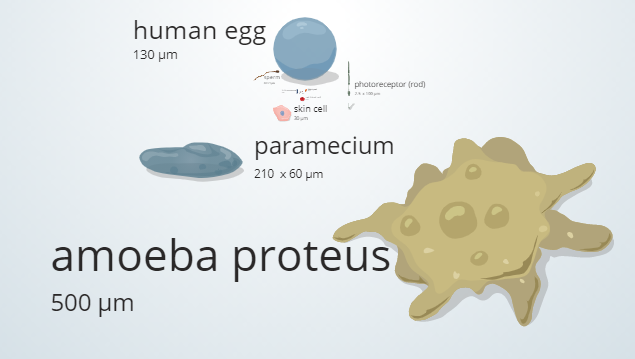We seldom see microscopic objects next to one another, so it can be difficult to picture how they compare. For instance, it might surprise you that a thousand cold-virus particles could line up across one human skin cell! The largest objects that scientists view through microscopes are about a millimeter (roughly the size of a poppyseed), and they’re about 10 million times larger than the smallest molecules scientists can view: atoms.
This insightful Cell Size and Scale interactive from the Genetic Science Learning Center at the University of Utah helps put the size of many biological structures in context. Supported by the Science Education Partnership Award (SEPA) program, the tool enables you to zoom in from the scale of a coffee bean all the way down to a carbon atom! Along the way, you’ll see bacteria, a range of human cells, a chromosome, a flu virus, and more.
After you explore this interactive, we encourage you to check out the other educational resources from SEPA. You can also find more interactives on our activities and multimedia webpage.

This post is a great supplement to Pathways: The Imaging Issue.
The relative sizes in the microscopic world described in Pathways can be difficult to conceptualize. This post describes an interactive tool to view these relative sizes.
Learn more in our Educator’s Corner.


